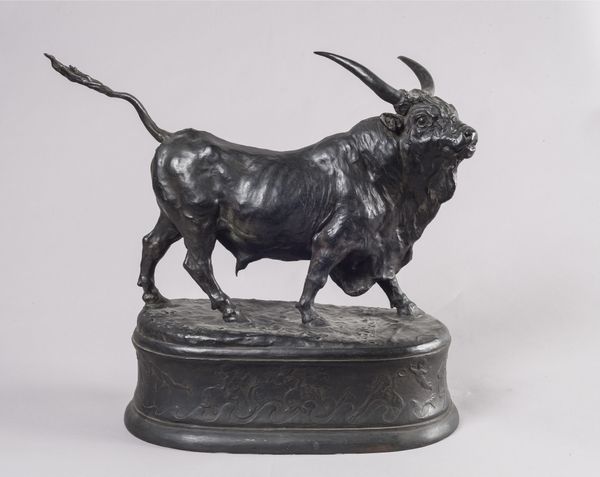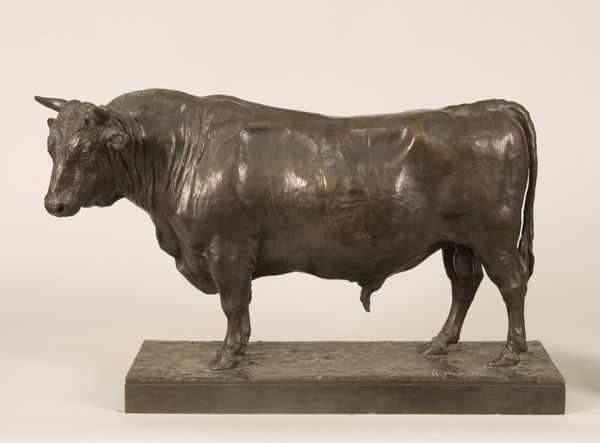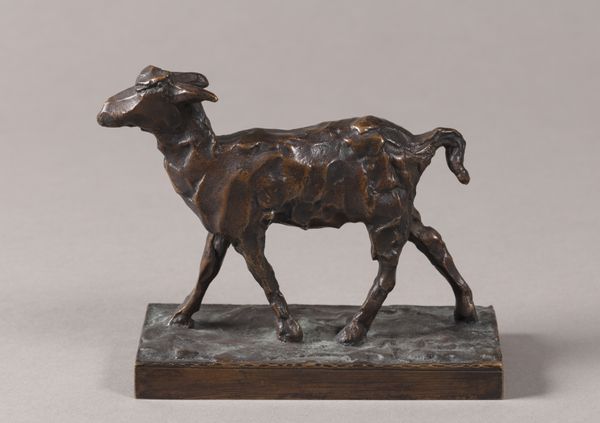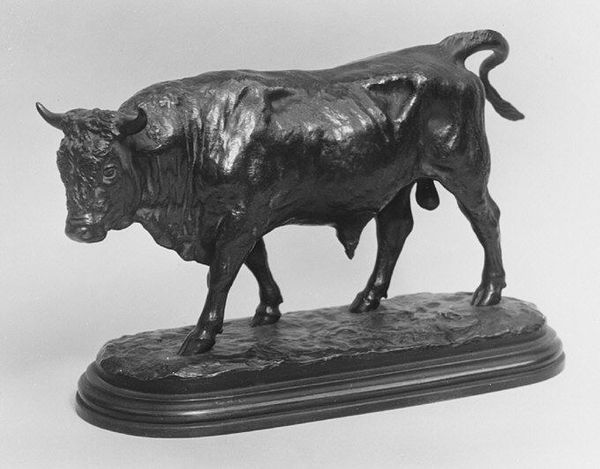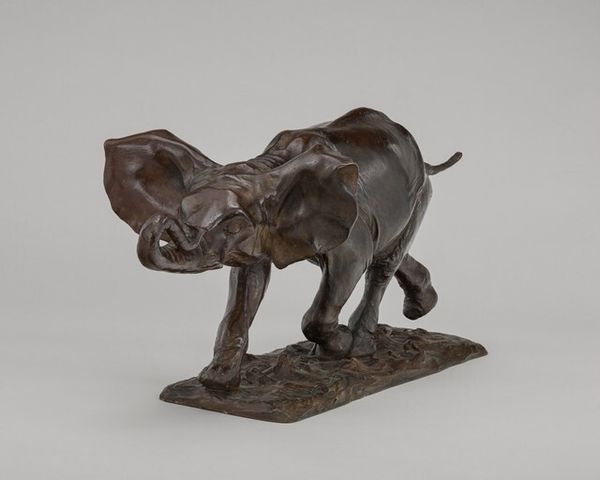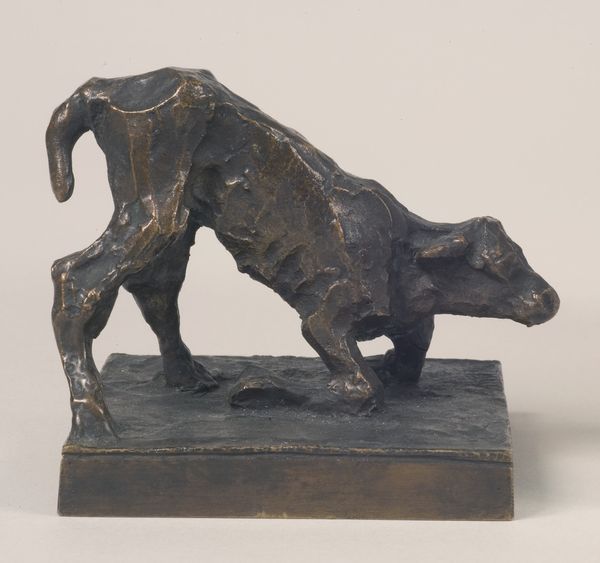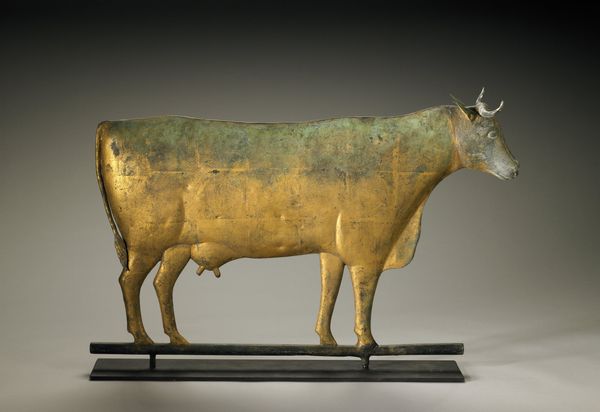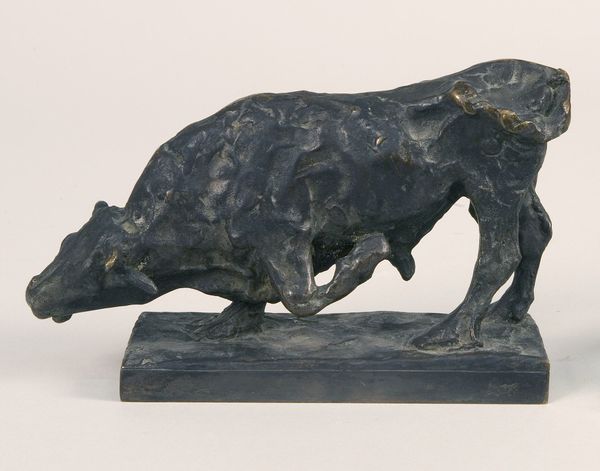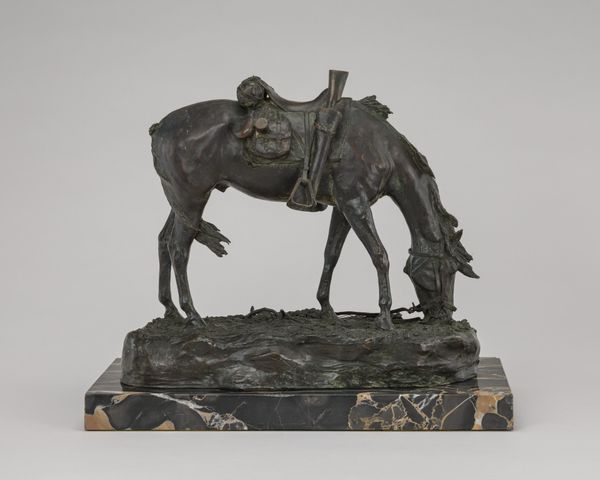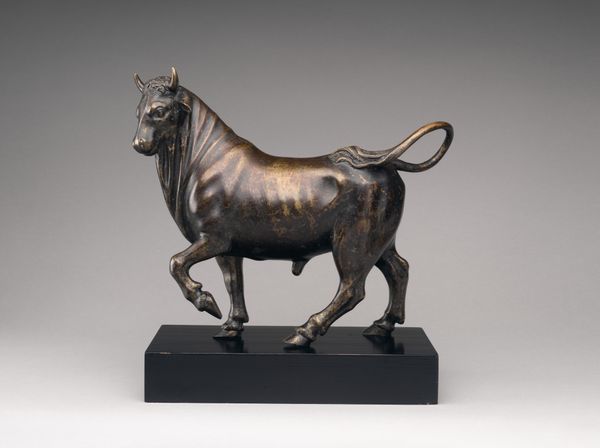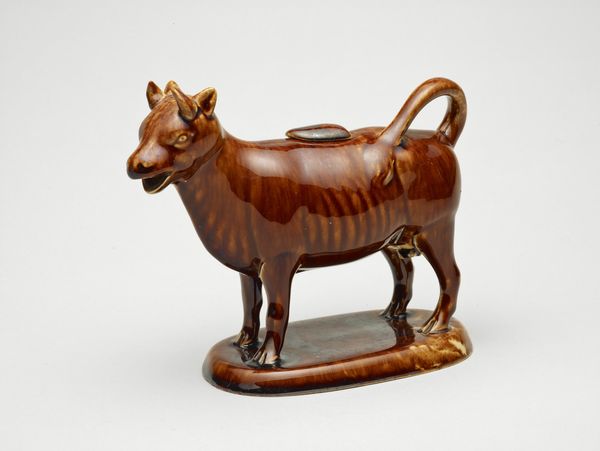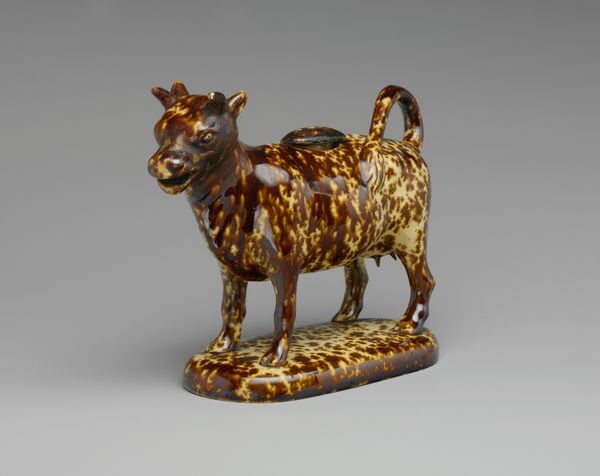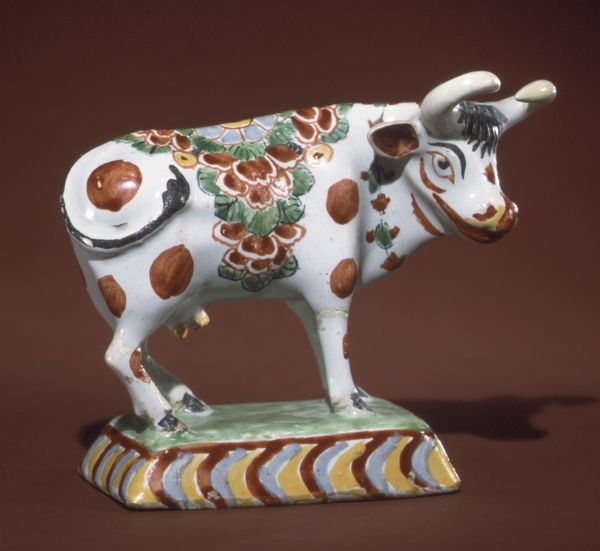
bronze, sculpture
#
bronze
#
figuration
#
sculpture
#
decorative-art
#
realism
Dimensions: Overall: 7 1/4 × 11 in. (18.4 × 27.9 cm)
Copyright: Public Domain
Curator: This 19th-century bronze sculpture, simply titled "Cow," is the work of Isidore Bonheur, and resides here at the Metropolitan Museum of Art. What strikes you immediately about this depiction? Editor: It has a sort of weary nobility, wouldn't you say? A heftiness communicated through the medium of bronze, but also a sense of...burden. The animal's form looks utilitarian, which perhaps relates to 19th-century anxieties and industrial developments around labor and the land? Curator: Precisely! Bonheur comes from a family of artists deeply engaged with the representation of animals, particularly within an increasingly industrialized French society. These depictions elevated rural life, even as those ways of life were dramatically shifting. Note how this bronze seems to document the animal. Editor: I do find myself drawn to that realism, almost to the point of anatomical study. What's fascinating here is this contrast of capturing labor – framing this cow within the economic reality of 19th-century agriculture–with this feeling of inherent worth or perhaps natural beauty, made possible through bronze. It elevates the everyday into something timeless and valued. Curator: The selection of bronze itself is quite telling. By immortalizing the animal in such a substantial material, Bonheur transforms a creature typically associated with function into a figure worthy of enduring art historical appreciation. Bronze also comes with a certain set of connotations, referencing the bronze age itself, or classical forms which Bonheur seems in conversation with. Editor: Right, by utilizing bronze to depict an ordinary farm animal, the artist really pushes boundaries. Think of the power dynamics inherent in such an act – bestowing a sort of monumentality onto what was considered largely of economic use, while so much human labor continues to be unseen. Curator: An interesting angle. By prompting that recognition, maybe this sculpture quietly questions prevailing attitudes toward animals and laborers. Editor: In the end, I’m left to question the legacy this artwork holds in our present – to not shy away from acknowledging the animal exploitation prevalent in the context that birthed this art object, but to honor an artistic creation that allowed us to have this conversation at all. Curator: Indeed. Bonheur's sculpture offers an opportunity to look critically at the complex relationships between art, labor, and society. A lasting testament.
Comments
No comments
Be the first to comment and join the conversation on the ultimate creative platform.
